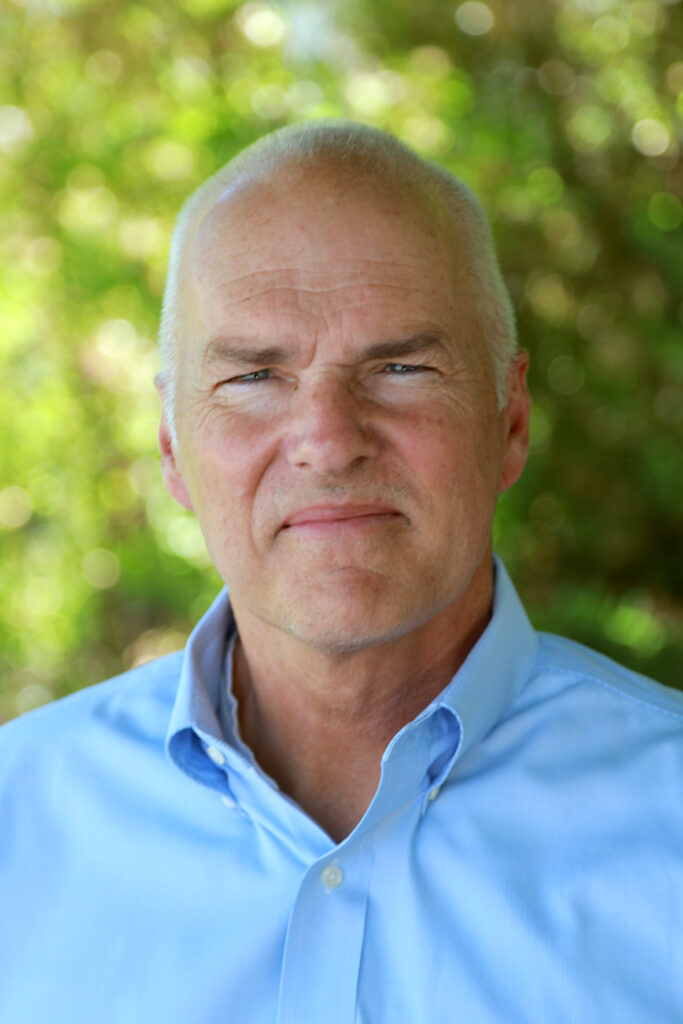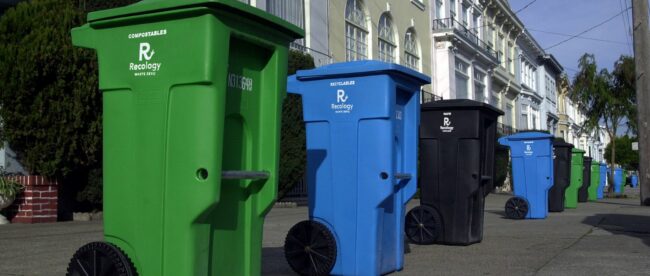Learn how San Francisco is leading the way on organic waste recycling from Recology’s Robert Reed
At N&R Publications, we have spent the last 10 years shining a light on people around the state—and around the country—who are quietly changing the world. And even though all of them would say ‘I’m just doing my job,’ the fact is their expertise can help solve major social problems. Our Q&A series will focus on a variety of experts in a variety of fields and bring that real-time information to readers.
by Jeff vonKaenel
No one said implementing SB 1383 would be easy. Well, except possibly someone in San Francisco, a city that has been successfully collecting food scraps for 25 years and has already set a North American record for composting and recycling.
SB 1383, of course, builds on the Bay Area’s prescient recycling program. It aims to combat climate change on a statewide scale, reducing the amount of organic waste by 75%. It also can feed more hungry Californians by rescuing 20% more edible food.
It’s a win-win, but for some areas of California, the challenges are many. What can we learn from San Francisco? We turn to Robert Reed, public relations manager at Recology, for his take on it all.

Public Relations Manager, Recology
Why is it so important for the environment to prevent food waste from going into the landfill?
In a landfill, food scraps and other compostable materials break down and produce methane, a potent greenhouse gas that contributes to the warming of our planet.
California sends 40 million tons of trash per year to landfills, and landfills contribute mightily to methane emissions in our state. This is something we can change. Many cities are helping reduce landfill gas emissions by implementing curbside food scrap collection programs for composting.
In addition to reducing landfill emissions, the compost made from food scrap collection programs is used by farms, including vineyards and orchards, to grow cover crops that pull carbon from the atmosphere and sequester it deep in the soil where it belongs.
And compost helps farms grow healthy food and save water. CalRecycle reports “applying all 3.2 million tons of compost currently produced annually in California increases the amount of water held in soil by about 3.7 billion gallons.”
So, farms that apply compost don’t have to water their crops as often. In this way, actively participating in curbside composting programs helps save water, which is essential for survival in periods of severe drought.
San Francisco and Recology have led the way in food scrap compost programs. What lessons did you learn from that experience?
We pioneered curbside food scrap collection for composting in North America in 1996.
Over the past 26 years, we learned that the environmental benefits from curbside composting are numerous and significant.
We learned that success depends in large part on encouraging and inspiring residents and businesses to fully participate by placing all their food scraps and other compostable materials in green bins for curbside collection.
We asked people to change the way they handle their garbage, and we helped them better understand why it’s important that we all participate.
We made curbside composting part of San Francisco’s culture. For example, we published the “12 Reasons to Compost.” We made presentations at hundreds of community meetings. We worked closely with the media to show people the finished compost and how it helps local farms, orchards and vineyards grow more healthy food.
San Francisco’s curbside composting program has kept more than 2.5 million tons of compostable materials out of the landfill.
What advice would you give to any other municipalities and hauling companies that are just starting to develop their own food scrap program?
Encourage people to think of composting as a good, green habit. Emphasize that by participating in a citywide program, people can help achieve many environmental benefits—that they are part of the solution.
Target outreach and education to students. Kids learn to compost at school, then go home and say, “Hey, Mom, Dad, we compost at school. Why don’t we compost at home?” The next day dad puts a kitchen compost pail on the kitchen counter.
Give people the tools they need, including kitchen pails, to be successful.
Keys to success include placing a used paper napkin at the bottom of their kitchen pail to absorb moisture and emptying their kitchen pail once a day into their green composting collection bin.
In terms of possible challenges implementing this up and down the state, what are some of the things that you are looking at and what suggestions do you have to overcome those challenges?
Cities need a place to send their compostable materials. Recology is leading the way. We operate eight composting facilities on the West Coast, including five composting facilities in California.
Adding more composting infrastructure by expanding existing operations and planning, permitting and building additional facilities will benefit our state in many ways.
We fully support collaboration and innovation in the industry, along with access to funding, to make curbside composting easier and more accessible for all California cities.
Challenges always come up. Keep moving forward. Stay strong.
Just for fun: Dog or cat? Pie or ice cream? Beach or canyon?
Pie with good coffee, compost the grounds, then long walk on Ocean Beach with my best friend—Peanut, a.k.a. Cacahuète (Boston Terrier).

